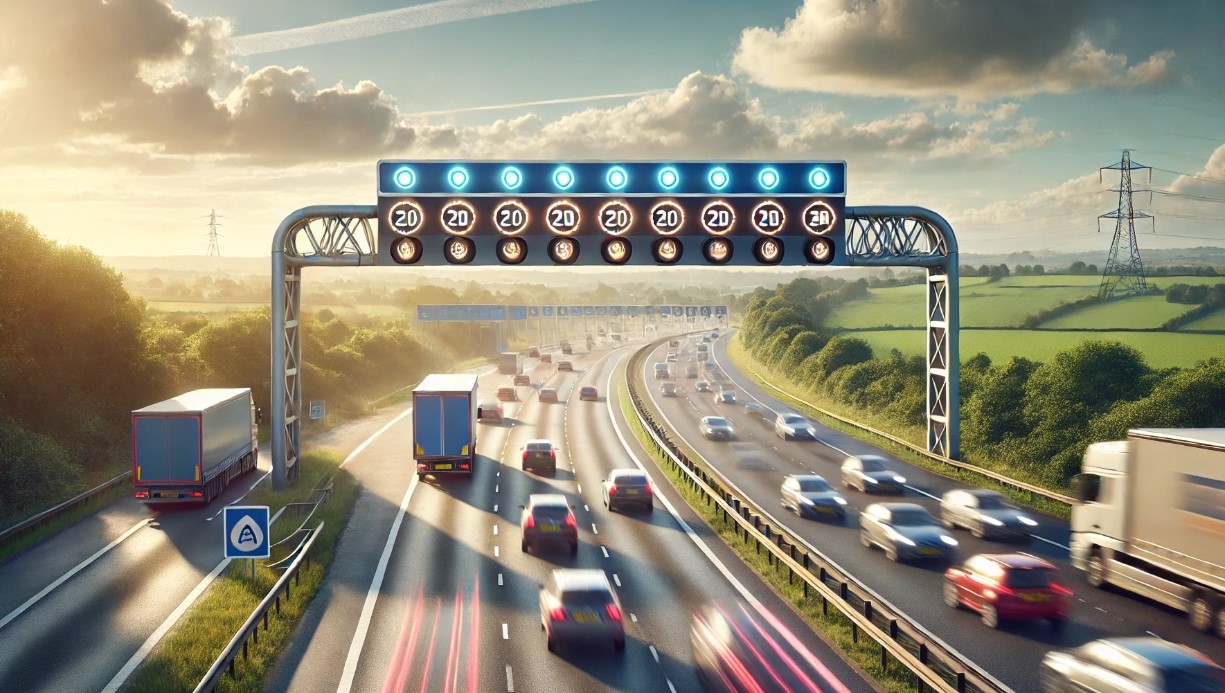Traffic bunching, commonly referred to as “congestion waves” or “phantom jams,” is a pervasive issue on motorways worldwide. In the UK, it is a frequent source of frustration for drivers, impacting not only travel times but also road safety and environmental sustainability.
It happens when vehicles are forced to slow down due to irregular driving patterns, such as sudden braking, inconsistent speeds, or merging bottlenecks. This chain reaction of deceleration ripples through traffic, creating dense clusters of vehicles and lengthening travel times.
The good news is that traffic bunching can be mitigated through advanced traffic management strategies, modern infrastructure, and driver education.
Technologies like smart motorways, variable speed limits, and intelligent transportation systems are being widely adopted in the UK to combat this issue.
This blog explores What helps to reduce traffic bunching on a motorway and these solutions, offering a detailed analysis of their effectiveness and highlighting ways drivers can contribute to reducing traffic bunching.
What is Traffic Bunching?
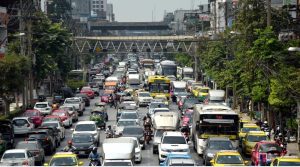
Traffic bunching is a non-linear effect where small disruptions in the flow of traffic multiply and cause vehicles to cluster together. Unlike a typical traffic jam caused by an accident or roadworks, bunching often occurs without a clear reason.
For instance, if a driver brakes suddenly, the cars behind them are forced to slow down, causing a ripple effect that can extend for miles.
Key Causes:
- Human Error: Inconsistent speeds, unnecessary lane changes, and poor following distances are major contributors.
- Infrastructure Bottlenecks: Narrow roads, poorly designed junctions, or merging lanes can cause a sudden reduction in capacity.
- Weather Conditions: Rain, fog, or snow reduces visibility and makes drivers overly cautious, slowing down the overall flow.
- Insufficient Road Capacity: Overcrowded motorways during peak times often exceed their designed capacity, leading to natural congestion.
Impacts of Traffic Bunching
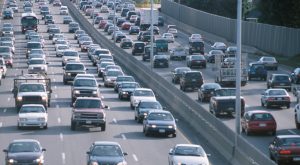
Traffic bunching isn’t just an inconvenience; it has far-reaching consequences.
Economic Costs
The UK economy suffers billions of pounds in losses annually due to delays caused by motorway congestion. Delays impact logistics companies, commuters, and emergency services, translating into higher costs for businesses and individuals alike.
Environmental Impacts
Congested traffic results in vehicles operating inefficiently, consuming more fuel and emitting higher levels of CO2 and particulate matter. Traffic bunching is a significant contributor to urban air pollution.
Safety Concerns
Close-proximity driving caused by traffic bunching increases the risk of rear-end collisions. Sudden braking and inconsistent speeds often lead to multi-vehicle pile-ups, particularly on high-speed motorways.
Key Solutions to Reduce Traffic Bunching
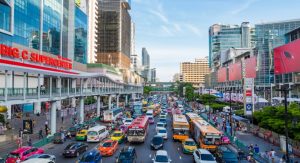
Smart Motorways
Smart motorways are an innovative approach to maximizing road efficiency without physical expansion. Using advanced traffic management systems, they allow authorities to dynamically control motorway conditions in real time.
Key Features of Smart Motorways:
- All-Lane Running: Converts the hard shoulder into a usable lane during peak times.
- Overhead Gantries: Display dynamic speed limits, lane closures, and traffic information.
- Incident Detection: Monitors for breakdowns or accidents and alerts operators instantly.
Effectiveness:
Smart motorways have reduced congestion and increased capacity by up to 25% in heavily used sections of the UK’s motorway network, such as the M25 and M42.
Variable Speed Limits
Variable speed limits adapt to real-time traffic conditions, regulating the flow and preventing sudden stops or bottlenecks. They ensure that all vehicles travel at a pace that optimizes road capacity.
Technology Behind Variable Speed Limits:
- Sensors: Embedded in the road, these sensors monitor traffic density, average speeds, and weather conditions.
- AI Algorithms: Analyze data from sensors to predict congestion and calculate optimal speed limits.
- Dynamic Signage: Displays updated speed limits on overhead gantries or roadside signs.
By slowing traffic before it builds up at a bottleneck, variable speed limits prevent stop-and-go patterns from forming, which are a major cause of congestion waves.
Hard Shoulder Running
The hard shoulder, traditionally reserved for emergencies, is now used as an additional traffic lane on smart motorways during high-demand periods. This technique effectively increases capacity without requiring road expansion.
Safety Considerations:
To ensure driver and passenger safety, smart motorways with hard shoulder running include features like:
- Emergency Refuge Areas: Located every 500 to 800 metres for vehicles in distress.
- CCTV Monitoring: Allows traffic controllers to respond quickly to incidents.
- Clear Signage: Alerts drivers when the hard shoulder is in use.
Hard shoulder running has been proven to reduce peak-hour congestion by up to 30% on busy motorways.
Dynamic Lane Usage
Dynamic lane management involves opening or closing lanes based on traffic demand and conditions. It also includes reversible lanes, which change direction to accommodate peak traffic flows.
Real-World Examples:
- High-Occupancy Vehicle (HOV) Lanes: Encourage carpooling, reducing the total number of vehicles on the road.
- Bus Priority Lanes: Allow public transport to bypass congestion, making it a more attractive option for commuters.
Dynamic lane management improves road efficiency by allocating space where it’s needed most, significantly reducing bottlenecks.
The Role of Technology in Traffic Management
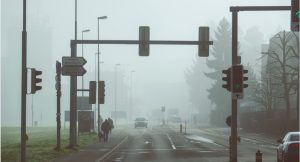
Traffic Monitoring Systems
Traffic monitoring systems are essential tools for real-time congestion management. They use AI, cameras, and sensors to analyze and predict traffic patterns.
Key Applications:
- Predictive Modelling: Anticipates congestion and adjusts traffic control measures preemptively.
- Incident Response: Detects accidents or breakdowns and dispatches response teams quickly.
Advancements in AI:
AI systems can now predict congestion hours in advance, allowing traffic controllers to take proactive measures like deploying additional resources or adjusting speed limits.
Intelligent Transportation Systems (ITS)
ITS uses interconnected devices to create a networked approach to traffic management.
Capabilities:
- Real-time data integration from road sensors, weather forecasts, and vehicle navigation systems.
- Coordination between motorways and urban traffic lights for smoother transitions.
- Vehicle-to-Infrastructure Communication (V2I), which enables smart vehicles to receive real-time instructions from traffic management systems.
Future Innovations:
The next frontier in traffic management includes autonomous and connected vehicles that can reduce human errors, the leading cause of traffic bunching.
Technologies like platooning, where autonomous vehicles travel in tightly controlled convoys, could revolutionize motorway efficiency.
Infrastructure Improvements for Better Traffic Flow
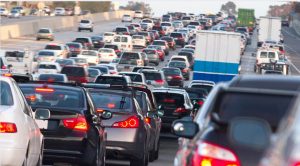
Beyond technology, physical upgrades to motorway infrastructure play a critical role.
Widening Motorways:
In areas with persistent congestion, adding extra lanes is sometimes the only viable solution. However, this is costly and often meets environmental opposition.
Improving Junctions:
Reconfiguring junctions to reduce merging conflicts can significantly improve throughput. Examples include the use of flyovers or slip roads to separate merging traffic from through traffic.
Emergency Refuge Areas:
Expanding the number of refuge areas on motorways ensures that breakdowns do not obstruct traffic flow, reducing secondary congestion caused by accidents.
Educating Drivers for Safer Roads

While technology and infrastructure are critical, driver behavior often determines the success of these measures. Educating drivers about the importance of consistent speeds, maintaining safe following distances, and understanding motorway signage can go a long way in reducing traffic bunching.
Government Initiatives:
Campaigns like “Think!” in the UK aim to promote safe driving practices through advertisements, educational materials, and community outreach.
Advanced Driver Assistance Systems (ADAS):
Modern vehicles are equipped with ADAS features such as adaptive cruise control, lane-keeping assist, and collision warnings. These systems help drivers maintain steady speeds and avoid abrupt braking, contributing to smoother traffic flow.
Conclusion
Reducing traffic bunching on motorways is a shared responsibility that requires the integration of cutting-edge technology, robust infrastructure, and responsible driver behavior.
Smart motorways, variable speed limits, and dynamic lane management are effective tools for tackling congestion, but their success depends on widespread adoption and adherence to traffic rules.
With continued investment in innovation and education, the UK is well-positioned to lead the way in creating efficient and sustainable road networks for the future.
FAQs
What are the benefits of variable speed limits?
Variable speed limits help reduce congestion by regulating traffic flow and minimizing sudden braking. They improve journey reliability and road safety.
How do smart motorways improve traffic flow?
Smart motorways use technology to manage traffic in real time, optimizing speed limits and lane usage to reduce congestion.
Are there any disadvantages to using hard shoulders as running lanes?
The primary concern is safety, as hard shoulders are traditionally reserved for emergencies. Emergency refuge areas address this issue to some extent.
Can autonomous vehicles reduce traffic congestion?
Yes, autonomous vehicles can maintain consistent speeds and communicate with other vehicles, reducing human errors that cause congestion.
How do traffic monitoring systems work?
Traffic monitoring systems use cameras, sensors, and AI to analyze real-time traffic conditions, predict congestion, and provide actionable data for traffic management.
What role do drivers play in reducing traffic bunching?
Drivers can help by maintaining steady speeds, avoiding sudden braking, and adhering to traffic rules.
Is the UK planning any new traffic management innovations?
Yes, the UK is exploring connected vehicle technologies, expanded smart motorway networks, and eco-friendly transportation systems to further reduce congestion.

